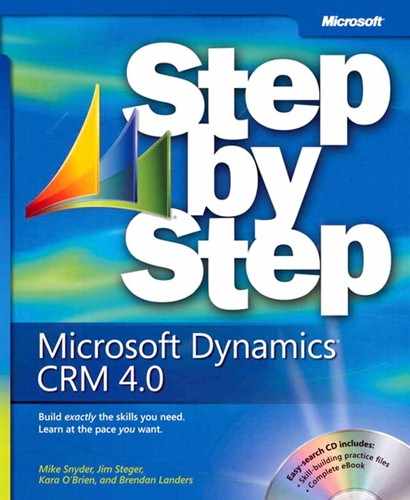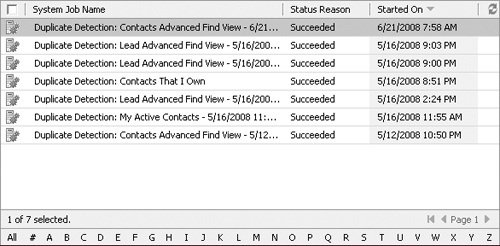Detecting potential duplicates is relatively simple. Detecting absolute duplicates and automatically taking action against those records is a very dangerous concept. You probably would not want a record to automatically be deactivated or deleted because it is potentially a duplicate. Therefore, Microsoft Dynamics CRM handles the detection of duplicate records and provides the mechanism for you to evaluate the potential duplicate and take the appropriate actions.
Consider the following example. Assume that you have a duplicate detection rule that has the following criteria:
Match on first three letters of First Name
Exact match on Last Name
Exact match on Address 1: Street 1
Exact match on Address 1: ZIP/Postal Code
If there are two contacts—say, Michael Alexander and Michelle Alexander—associated to the same account in your system and you execute the above duplicate detection rules, Microsoft Dynamics CRM will find a potential duplicate. Although most of the potential duplicates identified would be actual duplicates, exceptions such as this will occur.
In this exercise, you will review potential duplicate records and take action against those records.
Note
USE your own Microsoft Dynamics CRM installation in place of the Adventure Works Cycle site shown in the exercise, and use the Duplicate Detection: Contacts That I Own job you created in the previous exercise.
BE SURE TO use the Internet Explorer Web browser to navigate to your Microsoft Dynamics CRM Web site, if necessary, before beginning this exercise.
In the Workplace area, click Duplicate Detection.
The list of duplicate detection jobs appears.
Open the Contacts That I Own job.
The information page opens. This page shows high-level information about the duplicate detection job.
In the left navigation bar, click View Duplicates.
Two lists appear on the View Duplicates page. The top list shows all records for which a potential duplicate was found. The bottom list shows the potential duplicates for the record selected in the top list. The potential duplicate list refreshes dynamically based on the record selected in the top list.
Now that you know the list of potential duplicates, you can take action on these records. You can take the following actions on the potential duplicate records by using the menu options on the toolbar:
Menu
Action
Outcome
Merge
Automatically
The potential duplicate record is merged with the selected record in the top list and deactivated.
Merge
Select Master
The native merge dialog box is presented, on which the user can select master fields.
More Actions
Edit
The potential duplicate record is opened for the user to modify.
More Actions
Deactivate
The potential duplicate record is deactivated.
More Actions
Activate
The potential duplicate record is activated.
Delete
Delete
The potential duplicate record is deleted.
Select the top record in the list that has an actual duplicate record in the bottom list.
Select the duplicate record in the bottom list.
On the toolbar at the top of the Potential duplicate records area, click the Merge button, and then click Select Master.
The Merge Records dialog box opens. This dialog box allows you to combine data fields from two records into a single record, which is considered the master. After you have completed the merge process, the master record inherits all of the child records of the subordinate record, and the subordinate record is deactivated.
Choose the correct master record fields, and click OK.
Now that you have resolved the first duplicate record, select the next record in the list and determine the appropriate course of action. Continue until all potential duplicates have been resolved.
You have completed the duplicate detection process. As you can see, you have flexibility over the rules, over when duplicate detection runs, and over the available actions to take and their related outcomes.
The process just described reactively addresses duplicate records. Microsoft Dynamics CRM also allows you to address duplicate records proactively. When you save or update a record, if a potential duplicate record is found, you are presented with the potential duplicate record. You can then decide which action to take, such as:




